During warmer months, horses and other equids are often affected by various external pests. Test your identification knowledge of common external pests and learn about the risk factors each species pose to equids, livestock, and even humans. To find more information on insect pests of animals, and registered insecticides approved for equid use in Tennessee, visit veterinaryentomology.org! As always, contact your local extension agent for assistance in managing external pests, internal parasites, or other equine health concerns.
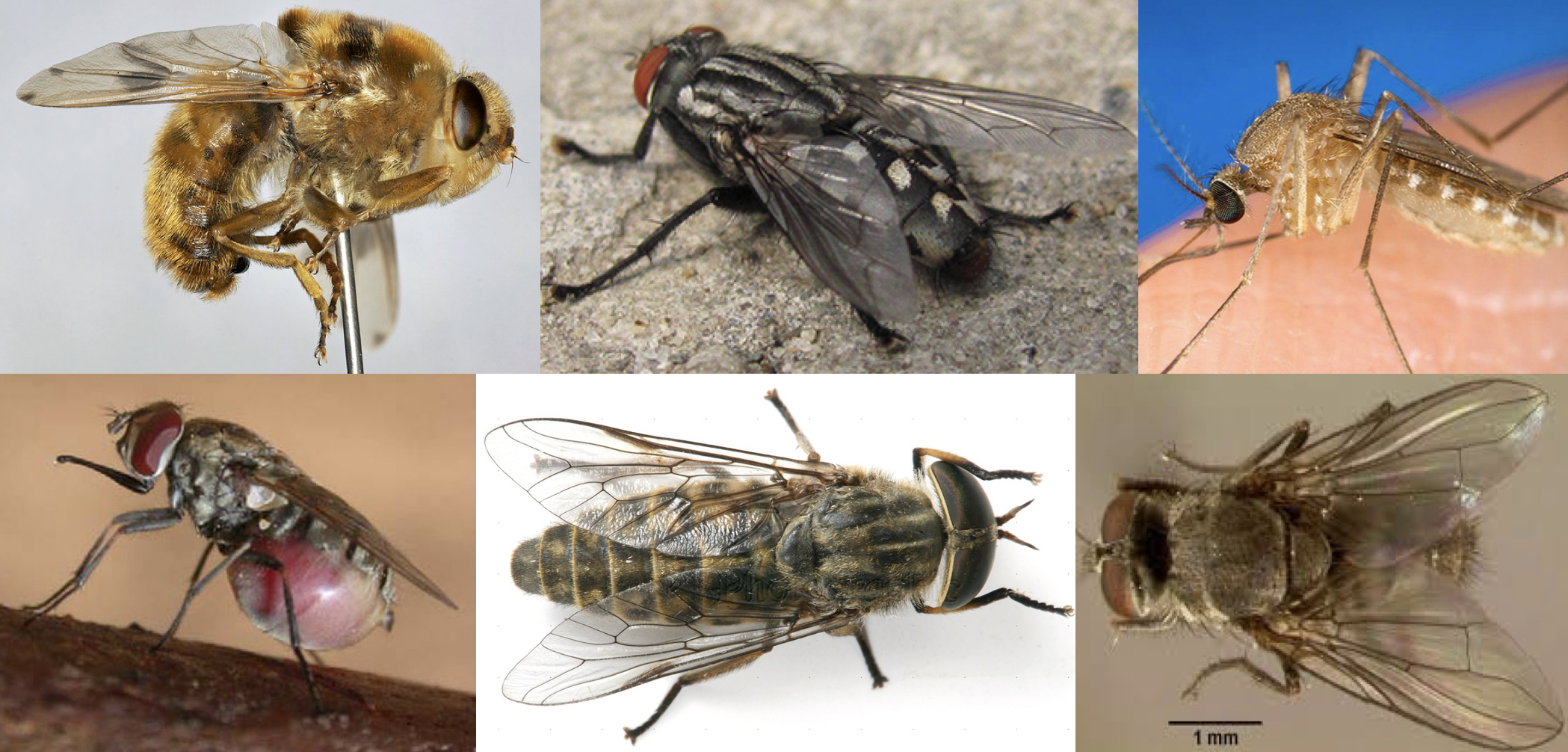
Bot Fly
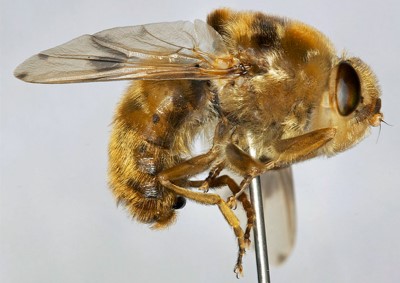
Bot flies (Gasterophilus species) affecting horses are beelike in appearance, but without bristles. Bot flies lay yellow to off white colored eggs or nits on the horse's forelimbs, nose, lips and body. As the horse licks itself, the larvae are released, and attach themselves to the mouth, stomach lining, or intestine. In large numbers, larvae can cause blockages, colic, and /or malnourishment. Since horse manue is a critical component of the bot fly life cycle, good manure management is critical to adult fly population control. Anthelmintics can also be administered to control larval stages.
Image Credit University of Wisconsin
Face Fly
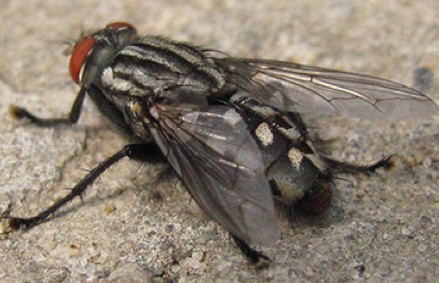
Face flies (Musca autumnalis) can be identified by their dark grey body with black stripes. Often, face flies gather around the eyes and muzzle of cattle and other livestock, including horses. Their mouthparts are specialized to sponge up saliva, tears and mucus. Since face flies often follow other flies that take blood meals, face flies will also lap up blood or other body fluids that accumulate on the skin. Often, their sponging mouthparts cause irritation to the eye and surrouding mucous membranes, which can result in infection. Face flies reproduce in cattle manure, thus good manure management is critical to control. Face flies also will not enter darkened buildings or shelters during summer months when temperatures are warm, so use of shaded areas can provide relief to horses.
Image credit: Orkin
Mosquito
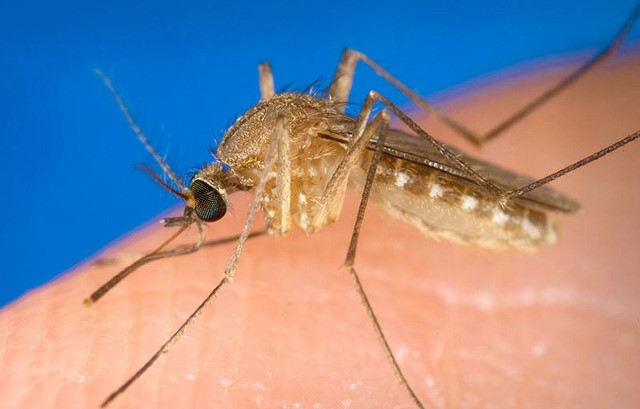
Mosquitoes are small insects approximatley 1/8 inch long, with a small head housing large eyes, and a long slender proboscis, or mouthpiece. Mosquitoes pose a disease threat to both horses and humans, with over 200 of the 2,500 species of mosquitoes exisiting in the United States. West Nile Virus (can affect both horses and humans) and Eastern, Western, and Venezuelan Encephalomyelitis (horses only) are often transmitted by Culex species mosquitoes. The best way to prevent mosquitoes is to eliminate breeding areas, including removing areas where standing water can collect such as buckets, old tires, tree holes, etc. Also, biologic and chemical control methods are available to target different mosquito life stages.
Image credit: Center for Disease Prevention
Stable Fly
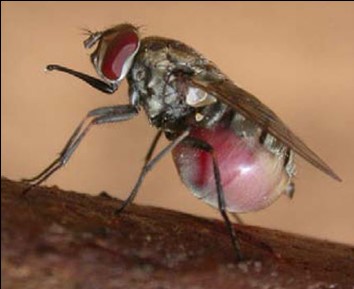
Stable flies (Stomoxys calcitrans) range in size from 1.4 to 3.8 of an inch long, with a long, bayonet-like mouthpiece used to pierce the skin and create a pool of blood. Stable flies tend to feed on the lower limbs of horses and cattle, which often results in frequent leg stamping. Stable flies pose a health risk for horses, as they can transmit equine infectious anemia, and serve as an intermediate host for stomach worms (Habronema muscae). To reduce stable fly population, use good sanitation and remove any decaying organic matter such as manure, hay, grass clippings, or spilled concentrate/grain. Various insecticides can be utilized as well.
Image Credit Brad Mullens, UC Riverside
Horse Fly
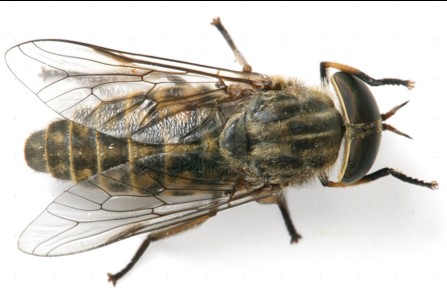
Horse flies belong to the same family (Tabidnae) as deer flies, and range in size from 3/4 to 1 1/4 inches long. Female horse flies have knife-like mouthparts that slice the skin, and feed on blood that pools on the surface of the horse. One fly can take up to 1 mL of blood per meal! Bites can be painful, and animals may bunch together to prevent repeated attacks from horse flies. Horse flies like sunny areas, and will often not enter areas of shade; thus, providing shade during daylight for equids can be a useful managemnt strategy. It is difficult to eliminate breeding areas for horse flies, as they reproduce in mud along streams, ponds, or other bodies of water. Permethrin-based sprays are labeled for application to horses and are effective in preventing flies from landing on the animal where applied. Pyrethrin sprays are also effective, but do not last as long.
Image Credit Warren Photographic
Horn Fly
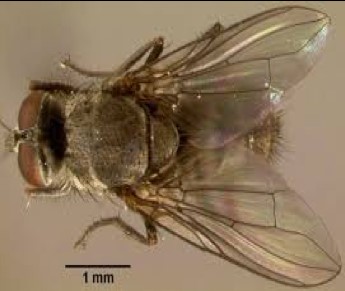
Horn flies (Haematobia irritans) can be identified by dark color, body size ranging from ~3 to 6 mm, and a bayonet-like mouthpiece that sticks out from the head. This piercing/sucking mouthpart can cause pain to horses when horn flies take a bloodmeal. Both male and female horn flies take bloodmeals multiple times per day, and will often stay on horses and cattle between feedings. Usually, horn flies can be seen on the withers and back of horses, and will move to the belly area during hours of peak sunlight or heat. Horn flies reproduce in cattle manure, and are often found in areas where cattle reside nearby.
Image Credit University of Florida Extension